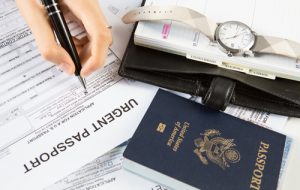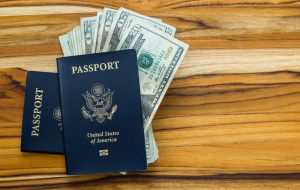What Kind of Visa to Visit India?

/ 5 Stars read 2 min
India is a beautiful and diverse country that has something to offer for every traveler. From the picturesque landscapes to the bustling cities and rich ancient history, India is truly a magnificent place. As a driver, you have the opportunity to explore the country’s beauty, experience the local culture and cuisine, and maybe even have the chance to drive on some of the most challenging and breathtaking routes in the world.
However, before you can embark on your journey to India, you need to obtain the appropriate visa. The visa process can be overwhelming for some, but don’t fret! This guide will break down the different types of visas available for drivers looking to visit India.
Tourist Visa:
The Tourist Visa is available to anyone who wants to visit India for leisure, sightseeing, or visiting friends and family. This visa is valid for six months to ten years and can allow for multiple entries into India. The duration of stay allowed is a maximum of 180 days. To obtain a Tourist Visa, you will need to provide proof of your travel plans, such as an itinerary, round-trip ticket, and hotel bookings.
Business Visa:
As a driver, if you are traveling to India for a business purpose, such as attending meetings or negotiating contracts, you will need a Business Visa. This visa is valid for six months to five years and can allow for multiple entries into India. The duration of stay allowed is a maximum of 180 days. To obtain a Business Visa, you need to provide proof of your business purpose, including an invitation letter from the company you will be visiting.
Medical Visa:
If you are a driver traveling to India for medical purposes, such as seeking medical treatment, you will need a Medical Visa. This visa is valid for up to one year and can allow for multiple entries into India. The duration of stay allowed is a maximum of 60 days per visit. To obtain a Medical Visa, you will need to provide a letter from the hospital or doctor in India confirming your medical treatment appointment.
Employment Visa:
As a driver, if you have a job offer in India, you will need an Employment Visa. This visa is valid for up to five years and can allow for multiple entries into India. The duration of stay allowed is determined by the employment contract. To obtain an Employment Visa, you will need to provide proof of your job offer, such as a letter of employment or contract from the Indian employer.
Student Visa
If you are a driver looking to study in India, you will need a Student Visa. This visa is valid for the duration of your course and can allow for multiple entries. The duration of stay allowed is determined by the duration of the course. To obtain a Student Visa, you will need to provide proof of your enrollment and admission to a recognized educational institution in India.
Conclusion
While the visa application process can be time-consuming, it is a vital part of traveling to India. Remember to apply for your visa well in advance to avoid any delays or complications. India is an incredible country, and with the appropriate visa, you can enjoy your stay and make unforgettable memories. We hope this guide has helped you understand the different types of visas available for drivers visiting India.
Get an Expedited Passport in As Little as 24 Hours!
Looking to travel in 30 days? And need to replace your passport, renew passport or get a new passport. U.S. Passport Help Guide provides all passport expediting services with passport services starting as low $199.00
Get an Expedited Passport Today!


